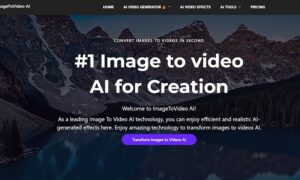As visual creatures, humans tend to process images faster than text. In the online world, images can make or break a website’s overall look and feel, and can also play a significant role in driving traffic. When it comes to Google Image Search, optimizing your images can help them rank higher in search results, ultimately leading to increased visibility and traffic for your website. In this article, we will discuss some tips and techniques to optimize your images for Google Image Search.
Understanding Google Image Search
Google Image Search is a search service owned and operated by Google. It allows users to search the web for images, which are typically indexed and ranked based on relevance and quality. In order to rank higher in Google Image Search, it is important to optimize your images in a way that makes them more easily discoverable and relevant to users.
Choosing the Right Image
Before we dive into the technical aspects of image optimization, it is important to choose the right image for your website. When choosing an image, consider the following:
- Relevance: Make sure the image is relevant to the content it is associated with.
- Quality: Use high-quality images that are visually appealing and clear.
- Size: Choose images that are appropriately sized for your website. Large images can slow down page load times and negatively impact user experience.
- Originality: Whenever possible, use original images that are not commonly found on other websites.
Image File Formats
There are several different file formats that can be used for images on the web. The most common formats are JPEG, PNG, and GIF. Each format has its own strengths and weaknesses, and choosing the right format can impact both image quality and page load times.
- JPEG: This format is best suited for photographs or images with a lot of detail. It offers high compression, which can result in smaller file sizes and faster load times. However, too much compression can result in a loss of image quality.
- PNG: This format is best suited for images with text, graphics, or logos. It offers high quality and supports transparency, but can result in larger file sizes and slower load times.
- GIF: This format is best suited for simple graphics or animations. It offers support for animation and transparency, but is not well-suited for photographs or images with a lot of detail.
Image Compression
Image compression is the process of reducing the file size of an image without significantly impacting its quality. This is important for optimizing images for web use, as larger file sizes can slow down page load times and negatively impact user experience.
There are several tools and techniques that can be used to compress images. One of the most common techniques is to use a compression tool or software, such as Adobe Photoshop or Squoosh. These tools allow you to adjust the quality and size of an image to find the optimal balance between file size and quality.
Image Alt Text
Alt text, or alternative text, is a description of an image that is used by screen readers and other assistive technologies to describe the image to visually impaired users. Alt text is also used by search engines to understand the content of an image and can impact search rankings.
When adding alt text to an image, be sure to keep it concise and descriptive. Use relevant keywords where appropriate, but avoid keyword stuffing or using irrelevant keywords. Alt text should provide a clear and accurate description of the image.
Image Titles and Captions
In addition to alt text, image titles and captions can also impact search rankings. When adding titles and captions to images, be sure to use relevant keywords and provide a clear and concise description of the image.
Image Sitemaps
Image sitemaps are a way to provide search engines with information about the images on your website. By including image-specific information in your sitemap, such as image location and metadata, you can help search engines better understand and index your images. This can lead to improved visibility and rankings in Google Image Search.
Image Metadata
Image metadata refers to additional information that is stored within an image file. This can include information such as the camera settings used to capture the image, the date and time it was taken, and more. This information can be used by search engines to provide additional context to the image, which can impact search rankings.
Image Hosting
When hosting images on your website, it is important to choose a reliable and reputable hosting provider. This can impact both page load times and the overall security of your website. Additionally, consider using a content delivery network (CDN) to improve image load times and reduce server load.
Image Size and Dimensions
In addition to file size, image size and dimensions can also impact page load times and user experience. When choosing image sizes and dimensions, consider the following:
- Use responsive images that are optimized for different screen sizes.
- Avoid using images that are larger than necessary for their intended use.
- Use appropriate dimensions to avoid distorting or stretching images.
Conclusion
Optimizing your images for Google Image Search can lead to increased visibility and traffic for your website. By choosing the right image, using the appropriate file format and compression techniques, and providing relevant metadata and alt text, you can improve your chances of ranking higher in Google Image Search. Additionally, be sure to consider image hosting, size, and dimensions to ensure the best possible user experience.



































